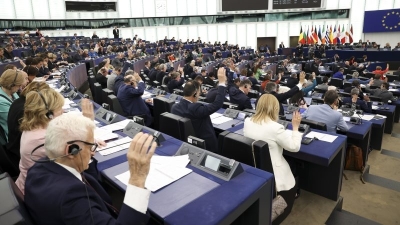How the EU’s revised renewables directive facilitates hydrogen market ramp-up

The revision of the Renewable Energy Directive sets ambitious targets for renewable fuels of non-biological origin (RFNBOs) in industry and transport. Pia Kerres, Corinna Klessmann and Matthias Schimmel reflect on the RFNBO provisions and the investment signals they send to the evolving European hydrogen market.
On 30 March 2023 the European Council, European Parliament, and European Commission reached a provisional agreement on the Renewable Energy Directive (REDIII).
REDIII is part of the ‘Fit for 55’ package and brings EU legislation in line with the 2030 EU greenhouse gas emission reduction goals.
Renewable hydrogen and its derivatives, also called renewable fuels of non-biological origin (RFNBOs), are a key tool to decarbonise hard-to-abate sectors (e.g., steel, chemicals, aviation or maritime). Their significant role is reflected in the target architecture of REDIII.
Breaking down the targets: What, when…
REDIII mandates that RFNBOs must account for at least 42% of renewable hydrogen used in the industrial sector by 2030, and at least 60% by 2035.
There are certain exemptions to these targets, including an exemption for by- and intermediate products when calculating the total amount of RFNBOs.
Additionally, if Member States have already achieved their national contribution to the binding overall EU renewable energy target and have a share of hydrogen from fossil fuels of not more than 23% in 2030 and 20% in 2035, they can discount the industry target by 20%.
The result is a lower RFNBO target for hydrogen used in the industrial sector (i.e., 33.6% in 2030 and 48% in 2035 respectively). This discount rule is the result of previous European discussions on the role of low-carbon vs. renewable hydrogen.
Currently, industrial hydrogen use is primarily limited to the fertiliser industry, which will need substantial investments to meet the RFNBO target.
Additional industrial hydrogen demand is expected in steelmaking and sectors with high-temperature processes (e.g., glass-making, cement), ultimately replacing the use of natural gas.
While the target puts pressure on existing industrial hydrogen use, “new” applications are expected to use renewable/low-carbon hydrogen from the outset.
In the transport sector, a binding combined sub-target of 5.5% by 2030 was set for the share of advanced biofuels and RFNBOs in the renewable energy supplied to the transport sector.
Within this target, there is a minimum requirement of 1%-point of RFNBOs. The RFNBO target was significantly reduced during the negotiations – down from 2.6% in the EC’s proposal.
However, the REDIII definition of the transport sector now includes maritime and aviation, significantly expanding the scope compared to REDII. One can expect that RFNBOs will primarily be used in the aviation and maritime sectors.
… and how?
Member States must now define the regulatory framework for national target achievement.
As REDIII does not put forward measures to meet the industry target, national governments can choose from a toolbox of instruments including direct quotas on industry, support schemes, such as carbon contracts for difference, or indirect measures such as labelling for green products.
Meanwhile, the EU Emission Trading Scheme (ETS) continues to incentivise abatement technologies and switch to low-carbon solutions. For the transport sector, the new sub-target needs to be included in the national quota obligations for transport fuels, i.e. national fuel suppliers are responsible for achieving the target.
Keeping track: Target accounting
The RFNBO sub-targets contribute towards the overall renewable energy target outlined in REDIII. However, the renewable electricity used to produce RFNBOs will not be counted, contrary to REDII.
Instead, the energy content of the RFNBOs produced will be counted in the sector and country where they are consumed. This new accounting approach is in line with the accounting of biofuels and considers conversion losses when producing hydrogen.
Based on this new accounting approach, hydrogen trade will also have implications for Member State renewable energy target achievement.
Meeting national renewable energy trajectories may become more difficult for Member States that have the potential to become major exporters of RFNBOs (e.g., Spain, Finland) due to higher overall electricity demand.
Comparatively, Member States that import RFNBOs (e.g., Germany, Belgium) may more easily achieve their renewables targets.
To balance this effect, REDIII introduces the option for cooperation agreements to enable Member States to split target statistics. Unless otherwise agreed, Member States are encouraged to count up to 70% of RFNBOs consumed in the importing country and up to 30% in the exporting country.
While the accounting rule generally favours RNFBO imports, hydrogen production brings about various benefits that are relevant for exporting countries, mostly related to local value creation.
Of note, this accounting effect is only relevant for exporting EU Member States. Exporting countries from outside the EU do not have to consider the above implications as they are not bound to the REDIII targets.
So what?
Sectoral RFNBO targets and the new accounting system may increase focus on demand-side policy instruments (such as quota obligations or financial support schemes).
These instruments can ensure reliable demand for renewable hydrogen and safeguard that hydrogen is used in sectors where it is most needed, i.e. in hard-to-abate sectors. Triggered demand could be supplied with locally produced or imported hydrogen.
Conclusion
Through sub-targets in the industry and transport sectors, the directive creates secure demand for renewable hydrogen in 2030 and beyond. REDIII thereby also creates investment certainty for developers to implement hydrogen supply projects. This certainty is critical for a successful hydrogen market ramp-up.



